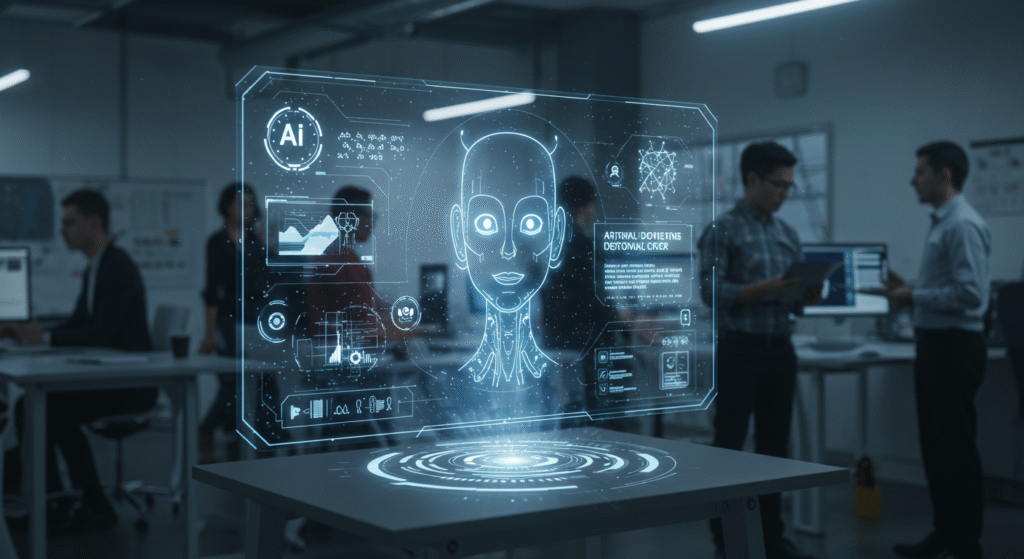If you’ve been riding the AI wave, buckle up. GPT-5, the upcoming version of OpenAI’s large language model, is expected to bring a massive leap forward in artificial intelligence capabilities. Whether you create content, write code, or work in a traditional office, this next-generation model is more than just another tool—it could completely change how we work, think, and build.
OpenAI’s GPT models have already altered the landscape for productivity and creativity. GPT-3 stunned the world with its fluency, and GPT-4 added stronger reasoning skills. GPT-5, according to early rumors, may go beyond what we expect from a language model, stepping into the realm of true AI agents that can remember, reason, and act.
In this blog, we explore what GPT-5 could mean for three key groups: creators, coders, and everyday professionals navigating the modern workplace.
The Creator Economy: New Tools, New Pressure
Content creators have already been using GPT-powered tools to generate blog posts, video scripts, ad copy, social captions, and more. With GPT-5, that workflow might accelerate even further. Here’s how:
Content Generation at a New Level
GPT-5 is expected to improve its ability to generate highly structured, multi-format content. That means you might be able to:
- Draft a YouTube video script and generate matching visuals and voiceovers in one go.
- Outline an entire blog series in seconds with contextual consistency.
- Turn a Tweet into a full blog or newsletter automatically.
More Memory, More Context
One of GPT-4’s major limitations is context length. GPT-5 will likely extend that significantly, allowing the model to remember your brand tone, prior conversations, and style preferences. This can be a game-changer for influencers or creators managing multiple channels.
Automation with Personality
Combined with voice cloning, video avatars, and text-to-video models like OpenAI’s Sora or Runway Gen-3, GPT-5 might help creators build fully automated content pipelines. Imagine a creator building a whole YouTube series without ever touching a camera—but still sounding like themselves.
However, this new ease comes with risks. As AI floods the internet with auto-generated content, audiences may crave more authenticity. The pressure to stand out will grow, and originality will become the true differentiator.
Coders and Developers: More Than Just a Copilot
Software developers are already familiar with GitHub Copilot, which runs on GPT-based models. GPT-5 may elevate the concept of AI-assisted coding into full-blown AI collaboration.
Smarter Pair Programming
GPT-5 might act more like a true teammate. Instead of just completing lines of code, it could:
- Understand project-wide architecture and patterns
- Fix bugs by analyzing multiple files and dependencies
- Suggest improvements to system design, not just syntax
Better Support for Niche Languages and Frameworks
GPT-5 is expected to train on a broader and more updated dataset, which means better fluency in lesser-known languages and newer frameworks. Developers working in Rust, Go, or using WebAssembly might finally get the AI support they need.
DevOps and Testing Help
We could see GPT-5 recommending optimized cloud configurations, writing unit tests, and even predicting performance issues based on code structure. This means fewer hours spent on boilerplate and more time solving complex logic.
But there’s a flip side. Junior developers may find fewer opportunities to practice and grow if GPT-5 automates the kind of work they normally start with. Companies and educators will need to rethink how they train the next generation of engineers.
The Modern Workplace: Automation and Adaptation
Most professionals in marketing, HR, sales, and operations are already dabbling with AI—whether it’s writing emails, summarizing meetings, or organizing customer data. GPT-5 might turn these small wins into major operational shifts.
Smarter Automation for Everyday Tasks
Expect tools built on GPT-5 to:
- Respond to emails in your voice and tone
- Summarize hours of meetings with actionable insights
- Fill out forms, draft reports, and handle data entry
Workflows could be created where AI not only writes your report but understands why it matters and how to act on the results.
The Rise of AI Agents
Unlike past versions, GPT-5 may have better memory and decision-making capabilities. This means agents that can:
- Manage your calendar and meetings
- Book appointments and even conduct research
- Run workflows across multiple apps like Slack, Notion, and Zapier
This level of intelligence could make the average office worker exponentially more productive. But it also introduces questions: What jobs will remain untouched? Will companies need fewer mid-level coordinators and more AI managers?
Challenges Ahead: Ethics, Misinformation, and Job Displacement
With great power comes greater responsibility. GPT-5’s potential raises red flags about ethical use, misinformation, and over-reliance.
Misinformation on Steroids
Better models can also mean better fakes. From fake news articles to AI-generated interviews, the internet may struggle even more with discerning what’s real. Tools to verify and trace content origin will become essential.
The Workplace Divide
People who learn to leverage AI will thrive. Those who don’t risk falling behind. It’s likely GPT-5 will accelerate a workplace divide between those who adapt and those who don’t.
Data Privacy and AI Control
Stronger models mean more data consumption and processing. Regulators will need to catch up fast. How data is used, stored, and protected will become a hot-button issue.
Prepare, Don’t Panic
GPT-5 isn’t just a smarter chatbot—it’s the foundation of a new digital operating system. Creators will find new ways to produce and scale content. Coders may collaborate with AI agents like they do with peers. Knowledge workers will automate more tasks than ever before.
The best strategy? Learn how to prompt, automate, and innovate with GPT-5. The people who win in the next wave of AI won’t be the ones who resist it—they’ll be the ones who embrace it smartly.

